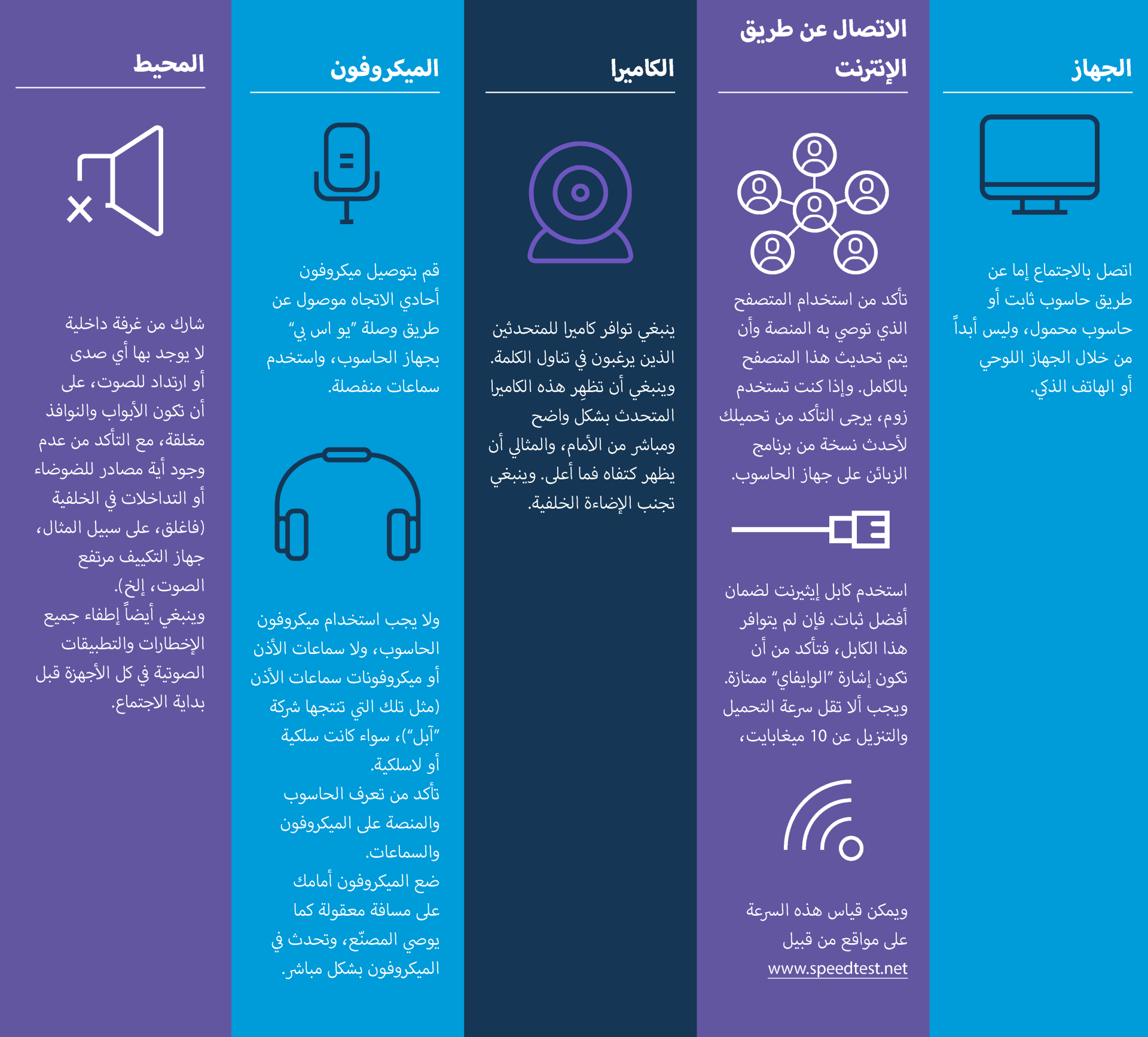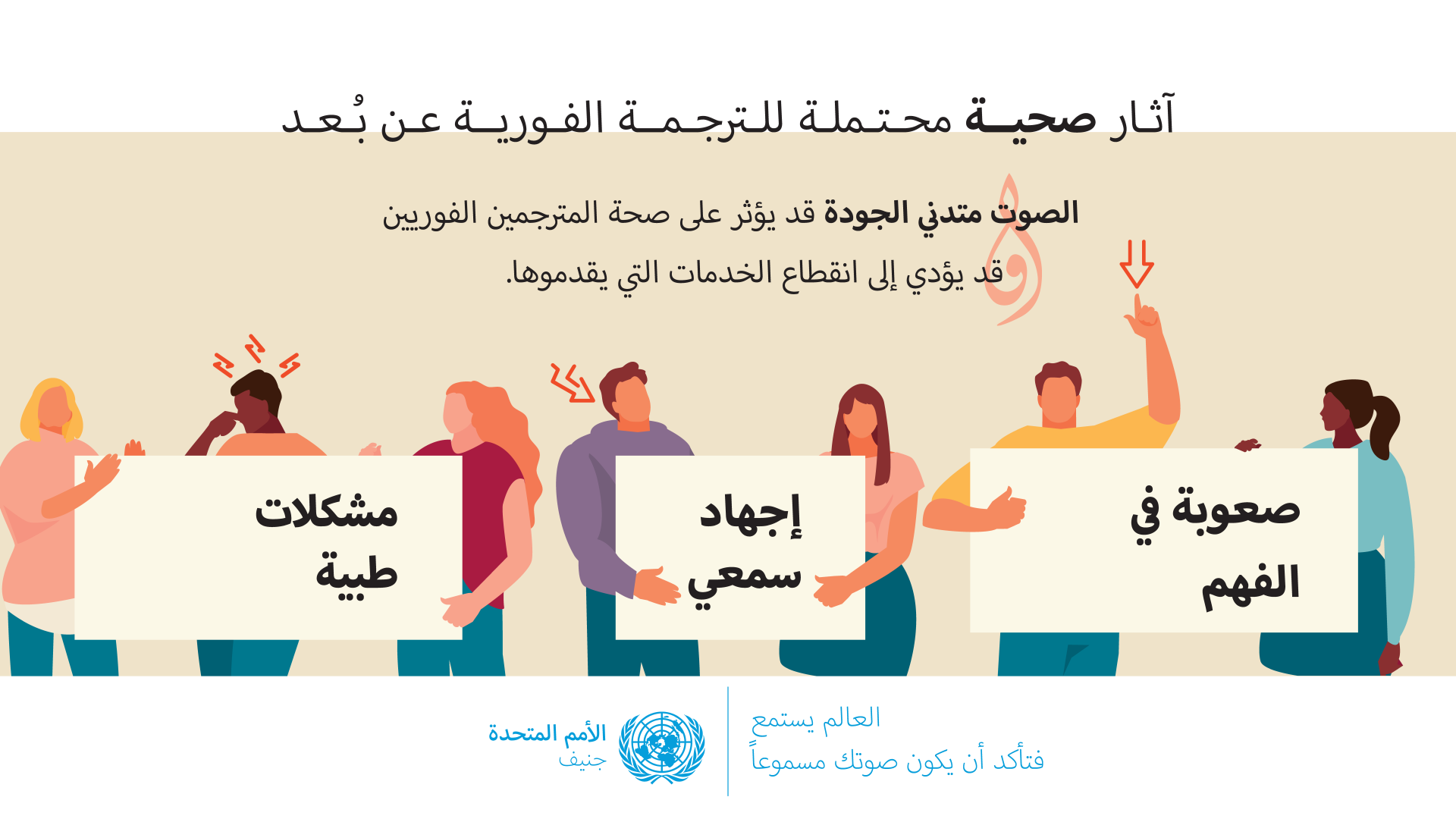
Breadcrumb
مقاطع الفيديو
يمكن أن تساعدك هذه السلسلة من مقاطع الفيديو التعليمية القصيرة على اختيار الأدوات والبيئة المناسبة لإيصال رسالتك بفعالية، كما يمكن أن تساعد مترجمينا الشفويين على سماع كلماتك وترجمتها بشكل أفضل. وللحصول على المزيد من الإرشادات المكتوبة بشأن ضمان جودة الصوت، راجع هذه الصفحة للاطلاع على الممارسات الفضلى.
تأكد من قوة الاتصال بالإنترنت
اختيار الجهاز المناسب
اختيار الإعدادات المناسبة
لماذا لا نوصي باستخدام سماعات الأذن المزودة بميكروفونات مدمجة
الميكروفونات الموصى بها
لماذا لا نوصي باستخدام الميكروفونات المدمجة في الحاسوب
لماذا لا نوصي باستخدام الميكروفونات اللاسلكية
نصائح مفيدة يجب أن تتذكرها خلال اجتماعك
كيف تحسن جودة صورتك على الشاشة
لماذا يجب كتم صوت الإشعارات؟
افعل ولا تفعل في القاعات المجهزة لأغراض التداول بالفيديو



